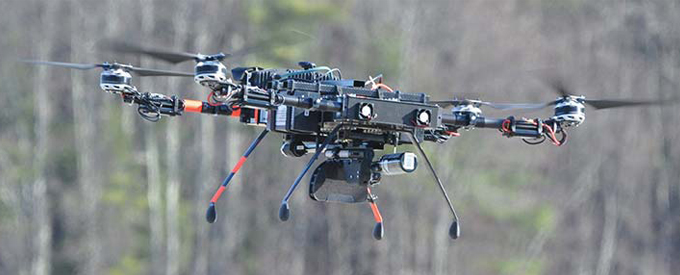2022-06-01
MIDAS Touch: AI-enabled C-UAS to Autonomously Identify and Track Targets
Aurora Flight Sciences, a Boeing Company, has reportedly advanced the capabilities of its Modular Intercept Drone Avionics Set (MIDAS) counter-unmanned aircraft system (C-UAS). The company’s engineers designed, implemented, and tested improvements to the drone engagement device (DED), onboard autonomy, and the speed and manoeuvrability of the vehicle platform.
Using similar test parameters for a previous demonstration for the Joint Counter-sUAS Office (JCO) and the U.S. Army Rapid Capabilities and Critical Technologies Office (RCCTO), MIDAS autonomously defeated 83 per cent of small UAS targets.
Aurora’s counter-drone technology includes a low-collateral effects UAS interceptor drone, fixed-wing and multi-rotor aerial targets, and hardware-in-the-loop simulation software. Each component of the counter-UAS toolset is flexible and rapidly evolving to meet customers’ needs.
MIDAS is Aurora’s AI-enabled, multi-rotor sUAV with optical sensors and a customised payload that can defeat multiple small UAVs per flight with low-collateral effects. The C-UAS is autonomous from launch through landing, cued by radar and optical sensor guides to target, has precise aiming and independent of flight direction. Moreover, it is a low cost system cost that has ground radar interoperability and future proof AI algorithms.
Aurora’s multi-rotor sUAV also offers open architecture for payload integration. Its quick-change modular rails and onboard computer support variable payloads, providing flexibility for evolving threats and alternate use-cases.
“Since our successful customer demos last year, we’ve continued to improve hardware and software systems on MIDAS to ensure we are prepared to meet the needs of future counter-sUAS programmes,” said Jason Grzywna, director of small UAS programmes at Aurora. “The vehicle we used for the most recent tests included enhancements in agility and autonomy, which improved target acquisition, and in the bolos fired by the DED, which proved more effective in completely disabling the target.”
Originally developed under a Defense Innovation Unit (DIU) contract, MIDAS is designed to mitigate adversary sUAS with low collateral effects. Cued by ground radar, the multi-rotor MIDAS uses an onboard sensor to identify and track adversary targets autonomously. Once the target is identified, MIDAS fires bolo projectiles that entangle the target’s propellers and disable the vehicle without endangering bystanders. “Aurora recognises the importance of an effective, low-collateral effects interceptor to help mitigate threats posed by the proliferation of low-cost Group 1 drones,” added Grzywna.
Part of the vehicle’s autonomy includes the use of perception and guidance, navigation, and control (GNC) algorithms to search for, track, and target drones within a range of the vehicle’s perception sensors. These algorithms provide a localised target position in real-time and determine how the system develops its autonomous intercept and firing solution. The vehicle then uses the information from these algorithms to provide control commands directly to the autopilot system and fire the drone engagement device.
Strategic Objectives
The 2021 approved U.S Department of Defense (DoD) C-sUAS strategy emphasises a new approach focused on rapid innovation, synchronisation of materiel and non-materiel solutions, and relationships with allies and partners. These strategic objectives will be achieved by working through three lines of effort.
The first objective focuses on developing innovative solutions using a risk-based approach to guide investment in C-sUAS capabilities. This level of effort will guide the rapid development of a suite of solutions that addresses emerging DoD requirements.
The second emphasises the provision of mission-ready forces that can deter and defeat sUAS threats. This can be done by developing operational concepts and doctrine, establishing joint training standards, and refining existing training content.
While the third stresses partnership with the national security innovation base, federal and non-federal entities, allies, and partners to facilitate rapid development and deployment of effective C-sUAS solutions while maximising interoperability. Leveraging existing relationships and creating new partnerships will enable innovation, prevent technology gaps, and expand information and security data sharing.
By implementing this strategy, the Department will address the challenge posed by both hazard and threat sUAS operating within the U.S. homeland, host nations, and contingency locations. Commanders in these varied operating environments will have the solutions needed to protect DoD personnel, facilities, assets, and missions from current and future sUAS threats.


No Comments